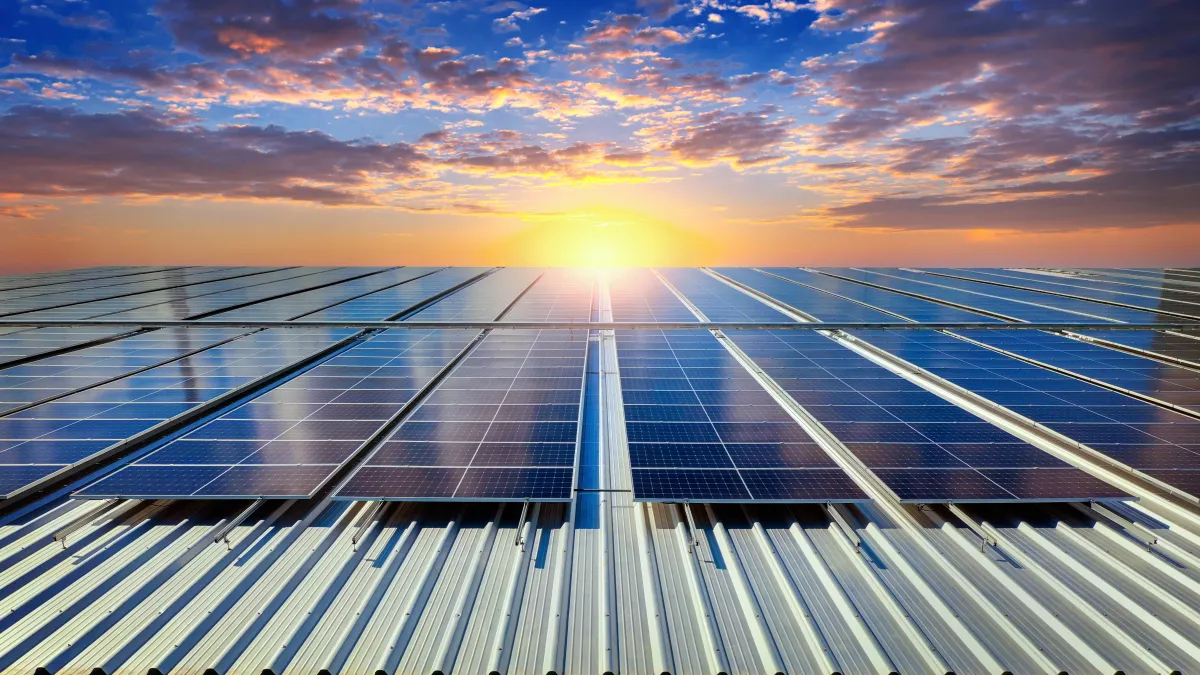
Solar Glass Manufacturing Plant Setup Report 2025 Industry Trends, Cost And Economics Details
Setting up a solar glass manufacturing plant involves securing suitable land, sourcing raw materials like silica sand and soda ash, acquiring advanced melting and forming equipment, and adhering to industry standards for quality and sustainability. Initial investments cover machinery, skilled labor, and regulatory compliance.
IMARC Group's report, titled “ Solar Glass Manufacturing Plant Project Report 2025: Industry Trends, Plant Setup, Machinery, Raw Materials, Investment Opportunities, Cost and Revenue,” provides a complete roadmap for setting up a solar glass manufacturing plant. It covers a comprehensive market overview to micro-level information such as unit operations involved, raw material requirements, utility requirements, infrastructure requirements, machinery and technology requirements, manpower requirements, packaging requirements, transportation requirements, etc.
Request for a Sample Report : https://www.imarcgroup.com/solar-glass-manufacturing-plant-project-report/requestsample
Solar Glass Industry outlook 2025:
The solar glass industry outlook for 2025 is strong, fueled by rising global investment in renewable energy and supportive government policies. Increasing demand for photovoltaic (PV) installations, particularly in Asia-Pacific and Europe, is driving the need for high-performance solar glass. Technological advancements, such as anti-reflective coatings and bifacial module compatibility, are enhancing efficiency and market appeal. However, supply chain constraints and raw material price fluctuations may impact manufacturing costs. With growing emphasis on sustainability and energy independence, the industry is expected to expand steadily, supported by innovation and large-scale solar infrastructure projects worldwide.
Key Insights for Solar Glass Manufacturing Plant Setup:
Detailed Process Flow:
-
Product Overview
Unit Operations Involved
Mass Balance and Raw Material Requirements
Quality Assurance Criteria
Technical Tests
Project Details, Requirements and Costs Involved:
-
Land, Location and Site Development
Plant Layout
Machinery Requirements and Costs
Raw Material Requirements and Costs
Packaging Requirements and Costs
Transportation Requirements and Costs
Utility Requirements and Costs
Human Resource Requirements and Costs
Capital Expenditure (CapEx) and Operational Expenditure (OpEx) Analysis:
Project Economics:
-
Capital Investments
Operating Costs
Expenditure Projections
Revenue Projections
Taxation and Depreciation
Profit Projections
Financial Analysis
Profitability Analysis:
-
Total Income
Total Expenditure
Gross Profit
Gross Margin
Net Profit
Net Margin
Key Cost Components of Setting Up a Solar Glass Plant :
-
Land and Infrastructure: Acquisition of industrial land, construction of manufacturing facilities, storage, and administrative buildings.
Machinery and Equipment: High-temperature furnaces, cutting, coating, tempering, and lamination equipment essential for glass manufacturing.
Raw Materials: Procurement of silica sand, soda ash, dolomite, and specialized coatings required for solar glass manufacturing.
Utilities and Energy: High electricity and gas consumption for furnace operation and glass processing.
Labor and Skilled Workforce: Hiring and training of technical staff for operations, quality control, and maintenance.
Environmental Compliance: Installation of pollution control systems and adherence to environmental regulations.
Technology and Automation: Investment in process automation, digital monitoring systems, and energy-efficient technologies.
Logistics and Distribution: Transportation infrastructure for inbound raw materials and outbound finished products.
Licensing and Legal: Permits, industry certifications, and legal compliance costs for establishing operations.
Economic Trends Influencing Solar Glass Plant Setup Costs 2025 :
-
Rising Energy Prices: Increased electricity and fuel costs are impacting operational expenses, particularly for energy-intensive glass melting and processing.
Raw Material Cost Volatility: Fluctuations in prices of silica sand, soda ash, and other key inputs are driving unpredictability in manufacturing budgets.
Global Supply Chain Shifts: Ongoing geopolitical tensions and trade restrictions are affecting the availability and cost of machinery and raw materials.
Green Incentives and Subsidies: Government support for renewable energy manufacturing is reducing capital costs through tax breaks and grants.
Labor Market Constraints: Skilled labor shortages in industrial manufacturing are increasing recruitment and wage costs.
Currency Fluctuations: Exchange rate volatility affects import costs for advanced equipment and technology, especially in emerging markets.
Challenges and Considerations for Investors in Solar Glass Plant Projects:
-
High Capital Requirements: Significant investment is needed for advanced machinery, infrastructure, and energy systems, leading to long payback periods.
Technology Dependence: Rapid advancements in solar glass technology require continuous upgrades to remain competitive and meet industry standards.
Supply Chain Risks: Dependence on specific raw materials and international suppliers can expose operations to delays and price volatility.
Environmental Regulations: Compliance with stringent emissions and waste management standards demands additional investment in mitigation technologies.
Market Competition: Increasing global manufacturing capacity, particularly in Asia, may exert downward pressure on prices and margins.
Policy Uncertainty: Changes in renewable energy policies or subsidy structures can impact project feasibility and long-term profitability.
Conclusion:
In conclusion, the solar glass industry in 2025 presents strong growth opportunities aligned with global renewable energy goals and increasing demand for solar technologies. While the sector offers long-term potential, setting up a solar glass plant involves substantial capital investment, technological commitment, and regulatory adherence. Investors must navigate supply chain complexities, energy-intensive operations, and competitive market dynamics. Strategic planning, access to incentives, and adoption of efficient technologies will be critical to ensuring operational viability and profitability in this evolving and sustainability-driven sector.
Browse Full Report: https://www.imarcgroup.com/solar-glass-manufacturing-plant-project-report
About Us:
IMARC Group is a global management consulting firm that helps the world's most ambitious changemakers to create a lasting impact. The company excel in understanding its client's business priorities and delivering tailored solutions that drive meaningful outcomes. We provide a comprehensive suite of market entry and expansion services. Our offerings include thorough market assessment, feasibility studies, company incorporation assistance, factory setup support, regulatory approvals and licensing navigation, branding, marketing and sales strategies, competitive landscape, and benchmarking analyses, pricing and cost research, and procurement research.
Contact Us:
IMARC Group
134 N 4th St. Brooklyn, NY 11249, USA
Email: sales[@]imarcgroup.com
Tel No:(D) +91 120 433 0800
United States: (+1-201971-6302)
Legal Disclaimer:
MENAFN provides the
information “as is” without warranty of any kind. We do not accept
any responsibility or liability for the accuracy, content, images,
videos, licenses, completeness, legality, or reliability of the information
contained in this article. If you have any complaints or copyright
issues related to this article, kindly contact the provider above.

















Comments
No comment